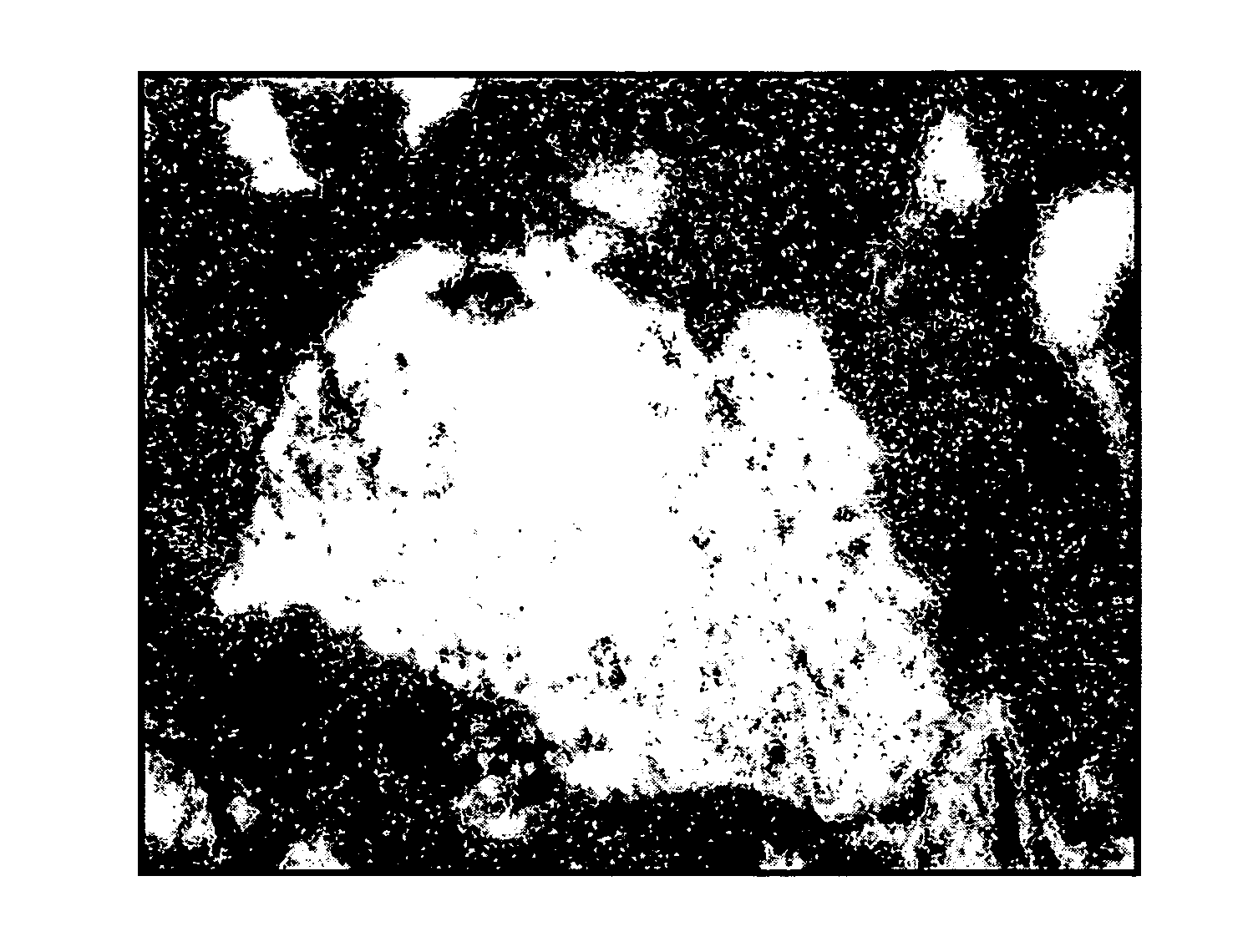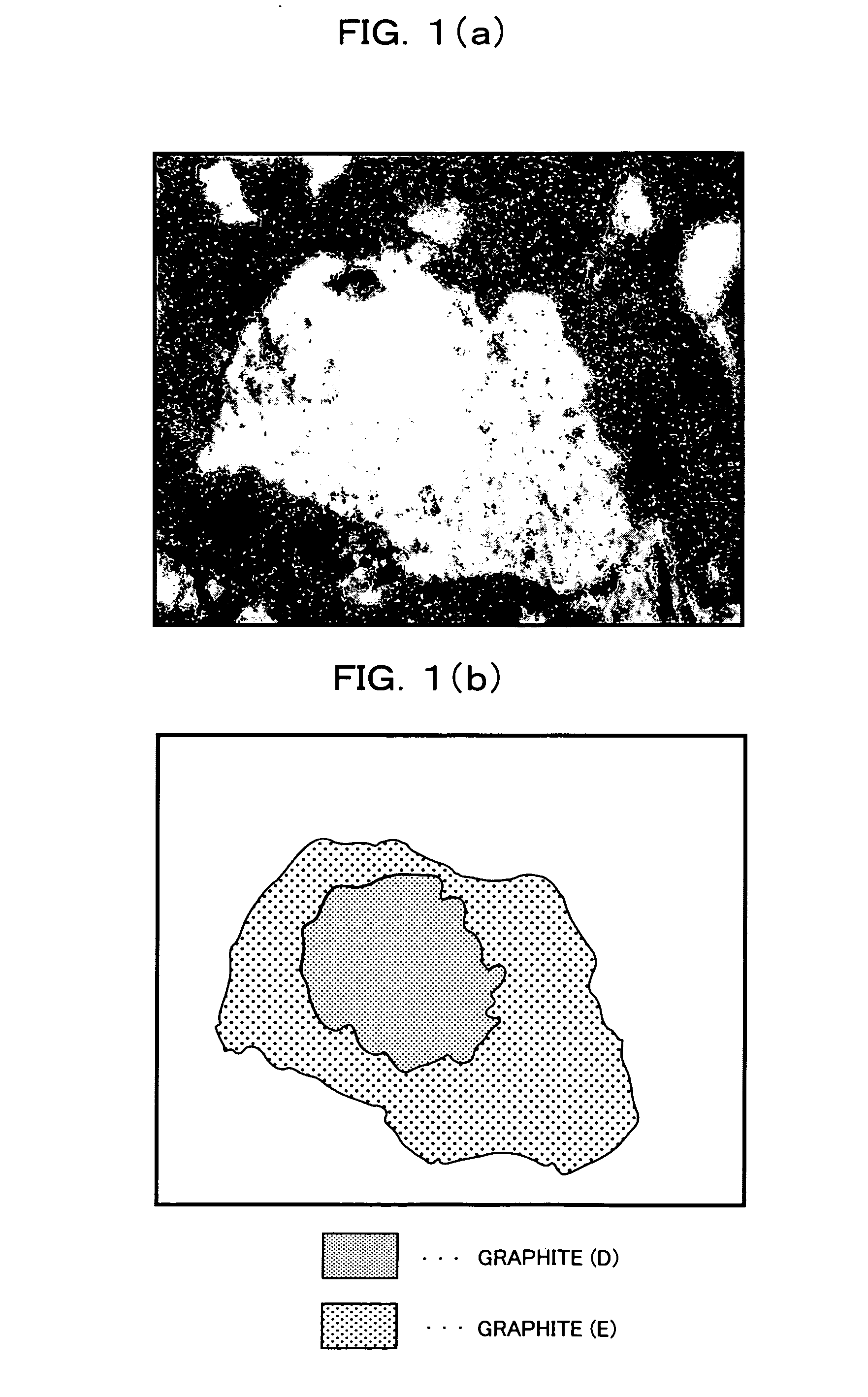Negative electrode material for lithium secondary battery, method for producing same, negative electrode for lithium secondary battery using same, and lithium secondary battery
a secondary battery and negative electrode technology, applied in the direction of electrochemical generators, cell components, electrochemical generators, etc., can solve the problems of easy swelling along the thickness of the electrode, poor battery capacity, charging and discharging efficiency, and load characteristics. , to achieve the effect of excellent lithium secondary battery, large discharging capacity and high efficiency during charging and discharging
- Summary
- Abstract
- Description
- Claims
- Application Information
AI Technical Summary
Benefits of technology
Problems solved by technology
Method used
Image
Examples
example 1
[0280] Fusible and clumpy heat-treated graphite crystal precursor with a softening point of 385° C. was obtained by subjecting coal tar pitch, whose quinoline insoluble content is 0.05 weight % or lower, to 10 hours heat treatment at 460° C. in a kiln. The softening point was measured by the method described previously.
[0281] Heat treatment graphite crystal precursor thus obtained was pulverized first with a medium-stage pulverizer (Orient Mill manufactured by Seishin Enterprise Co., Ltd.) and then further pulverized to a fine powder using a micropulverizer (Turbo-Mill manufactured by Matsubo Corporation) to obtain micronized graphite crystal precursor powder with a median diameter of 17 μm. The diameter was measured by the method described previously.
[0282] The micronized graphite crystal precursor powder obtained above was mixed with natural graphite, whose median diameter is 17 μm, aspect ratio is 1.9 and tap density is 1.0 g / cm3, so that the ratio of the amount of natural grap...
example 2
[0307] Graphite crystal precursor mixture obtained by the procedure similar to that of Example 1 was pulverized to a coarse powder using a coarse-size pulverizer (Roll Jaw Crusher manufactured by Yoshida Seisakusho Co., Ltd.) and pulverized further to a finer powder with a pulverizing machine (hammer mill, Dalton Co., Ltd.). The fine powder obtained was sieved through sieve pores of 45 μm to obtain micronized powder of 21.0 μm median diameter. The procedures of calcination treatment and thereafter were the same as that of Example 1 and a graphite-composite mixture powder (C) (negative electrode material of Example 2) was obtained.
[0308] The negative electrode material obtained in Example 2 was examined for its physical properties with the result that the median diameter was 20.0 μm, tap density was 1.20 g / cm3, and BET specific surface area was 1.8 m2 / g. The crystallinity measured by X-ray diffraction method, as in Example 1, gave the values of d002=0.3357 nm, Lc004>1000 Å (100 nm) ...
example 3
[0313] A graphite-composite mixture powder (C) (negative electrode material of Example 3) was obtained by the same procedure as described for Example 2, except that the ratio of the amount of natural graphite (median diameter 17.0 μm, aspect ratio 1.9, tap density 1.0 g / cm3)), which was to be mixed with micronized graphite crystal precursor powder, to the total amount of micronized graphite crystal precursor powder and natural graphite was set at 30 weight %.
[0314] Physical properties of the negative electrode material obtained in Example 3 were determined in the same manner as described for Example 1. Its median diameter was 17.5 μm, tap density was 1.16 g / cm3, and BET specific surface area was 2.5 m2 / g. Its crystallinity determined by the X-ray diffraction method, in the same manner as described for Example 1, gave the following data: d002=0.3356 nm, Lc004>1000 Å (100 nm).
[0315] The ratio of graphite composite powder (A) and artificial graphite powder (B) in negative electrode m...
PUM
 Login to View More
Login to View More Abstract
Description
Claims
Application Information
 Login to View More
Login to View More - R&D
- Intellectual Property
- Life Sciences
- Materials
- Tech Scout
- Unparalleled Data Quality
- Higher Quality Content
- 60% Fewer Hallucinations
Browse by: Latest US Patents, China's latest patents, Technical Efficacy Thesaurus, Application Domain, Technology Topic, Popular Technical Reports.
© 2025 PatSnap. All rights reserved.Legal|Privacy policy|Modern Slavery Act Transparency Statement|Sitemap|About US| Contact US: help@patsnap.com



